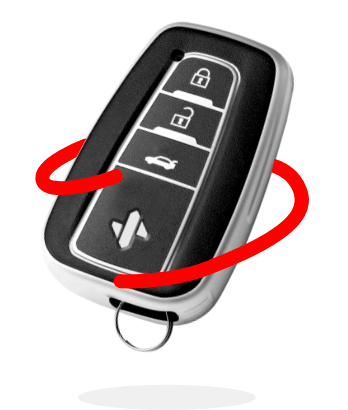Regarding personal finance, one trend has stood out starkly in recent times: auto insurance rates have surged, marking a significant increase of over 20% in the 12 months ending February 2024.
This uptick has left many consumers bewildered and seeking clarity on the forces behind these rising costs. Understanding the many factors that affect car insurance premiums is more crucial than ever, as it empowers you to make informed decisions and potentially mitigate some of these increases.
7 KEY FACTORS THAT INFLUENCE CAR INSURANCE RATES
1. Location Matters
Your zip code plays a pivotal role in determining your car insurance rates. Urban areas, with their higher traffic density and greater risk of accidents and theft, tend to have higher premiums than rural locales.
2. State Regulations
The state you live in significantly influences your insurance costs due to varying minimum liability insurance requirements. These legal stipulations can lead to wide rate disparities between states.
3. Driving Record
It's no surprise that insurers consider your driving history when calculating premiums. A record free of accidents and traffic violations suggests you're a lower risk, potentially leading to reduced rates.
4. Credit History
Many people are unaware that their credit score can impact car insurance costs. Insurers argue there's a correlation between credit history and the likelihood of filing claims, though some states have banned this practice.
5. Gender, Age, and Marital Status
These demographic factors can affect your insurance rates in surprising ways. For instance, younger and older drivers often face higher premiums due to perceived risk, while marital status can influence rates through potential discounts for married couples.
6. Claims History
If you've filed claims in the past, insurers may view you as a higher risk, which can lead to increased premiums. This is especially true for claims about accidents where you were at fault.
7. Vehicle Type
The make and model of your vehicle can also sway your insurance costs. High-performance cars or models prone to theft typically carry higher premiums.
WHY THE STEADY INCREASE IN AUTO INSURANCE RATES?
The steady increase in car insurance rates can be attributed to a confluence of factors impacting the industry on multiple fronts.
First and foremost, the rise in the frequency and severity of auto accidents, partly due to increased distracted driving incidents, has led insurers to adjust premiums upwards to cover the growing claims costs. Additionally, the surge in vehicle repair and replacement expenses, driven by advanced technology features in modern cars and the rising labor and parts costs, has further squeezed insurer margins, necessitating higher premiums.
The inflationary environment, characterized by rising medical costs associated with accident injuries, significantly escalates insurance rates. Moreover, natural disasters and extreme weather events have become more frequent and severe due to climate change, leading to higher comprehensive claims and increased insurance costs.
These factors create a complex backdrop against which car insurance rates continue to climb, reflecting the evolving challenges within the insurance landscape and the broader economic context.
4 STRATEGIES TO LOWER YOUR CAR INSURANCE PREMIUMS
Despite these seemingly fixed factors, there are strategies you can employ to lower your premiums potentially:
1. Comparison Shopping
Always compare quotes from multiple insurers to find the best rate for your specific situation.
2. Improving Credit Score
Improve your credit score, as a higher score could lead to lower rates.
3. Bundling Policies
Consider bundling your car and home insurance policies with the same provider to access potential discounts.
4. Paying Annually
Opting to pay your premium annually instead of monthly can save money in the long run.
HOW TO NAVIGATE THE FUTURE OF CAR INSURANCE
Looking to the horizon, the future of car insurance appears poised for transformation, driven by technological innovation and evolving legislative frameworks.
- The advent of telematics technology, which monitors a driver's behavior directly through devices installed in vehicles or smartphone apps, is revolutionizing the way insurers assess risk and determine premiums.
- The shift towards usage-based insurance means that safe driving habits can directly translate into lowering consumer insurance costs, promoting a more personalized and fair pricing model.
- On the legislative front, potential changes in regulations, particularly concerning the use of credit scores in determining insurance rates, could significantly alter the industry's approach to pricing policies.
- Several states are considering or have enacted laws limiting this practice, aiming to create a more equitable system that does not disproportionately penalize drivers based on their financial history.
Together, these developments signal a dynamic period ahead for car insurance, where technology and policy converge to reshape the landscape, potentially leading to more customized, fair, and transparent insurance products for drivers everywhere.
The dynamics of car insurance rates are influenced by a complex interplay of factors, from where you live to how you drive. While some of these elements may be beyond your control, being an informed consumer and taking proactive steps can help you navigate the maze of insurance premiums more effectively. Review your current policy, consider the strategies outlined above, and remember that knowledge truly is power in the world of insurance.
If you need help finding the best car insurance coverage for the best price, speak to a SimplyIOA agent at 833.872.4467 or get an auto insurance quote online now.










